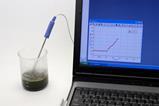5 ways to make professional development have a positive, long-term impact on your chemistry teachers

What continuing professional development (CPD) have you embraced this year? Was it effective? Have you found some things easier to implement than others?
If your answer to question two was no, you’re not alone. Schools invest a lot of time and energy into CPD for their staff, but much of it is ineffective. A discussion on X outlined just how common this opinion is. Recently, many schools have embraced the need for subject-specific CPD. With this in mind, I thought I would share a few of the ways you can make any CPD you want to run more likely to stick, and have a positive, long-term impact on your science teachers.
If your answer to question two was no, you’re not alone. Schools invest a lot of time and energy into CPD for their staff, but much of it is ineffective. A discussion on X (bit.ly/4632Zya) outlined just how common this opinion is. Recently, many schools have embraced the need for subject-specific CPD. With this in mind, I thought I would share a few of the ways you can make any CPD you want to run more likely to stick, and have a positive, long-term impact on your science teachers.
Prioritise priorities
When thinking about improving chemistry teaching in a school it’s likely that there will be multiple issues that you want to focus on. However, having more than one focus is a common dilemma with CPD. While teachers are learning and improving, they are often going through a complex process. They are having to disrupt existing habits while trying to replace them with new ones. Attempting this on more than one technique at a time can be difficult for a teacher to handle. Allow yourself time to carefully consider all the things you could work on and decide which to focus on first. Be determined to make this your only focus, for now.
Change takes time
We are all encouraged to have improvement plans for our teams, and they can be useful tools. But be wary of feeling you must fill them to the brim with a variety of initiatives, with the result that you feel pressured to move on to the next thing each term. Give each change that you want to make time to become fully embedded into the team’s teaching practice. This is crucial. Very often, we move on to the next thing before the last change has become habitual. As our focus shifts to the new concept, the previous one begins to decay back to its original state, and we find ourselves having to revisit it the following year.
Separate CPD and induction
When new staff arrive, it presents a golden opportunity. They are in a perfect position to learn new habits as all their environmental cues have been disrupted. However, not only do new teachers have to adapt to all the new routines, terminology and timings of the day, but they also have to adjust to the new model of teaching. Induction is a big challenge and one that schools expect new teachers to complete within a compressed time frame. Make sure that this is a separate matter to CPD. Inducation needs time, energy and focus that is not linked to the normal professional development program.
Make progress measurable
A lot of improvement plans have criteria that include points such as ‘Cold calling will be embedded into lessons and seen regularly’ but that really doesn’t give us much information about when to move on. If we establish a criteria that is more specific, such as ‘In a review of cold calls 95% of lessons show habitual use’ then we have a measurable target. It’s now possible to have a better understanding of when your team is ready to move on to the next step instead of just a gut feeling.
Shared targets
Everyone is an individual. No two teachers educate in the same way. Within all teams there will be variation in teaching approach. So, should a CPD system be flexible, to allow different people to work on different things? Ideally, yes it should be. And in a perfect world, it would be. However, in the real world, the most powerful tool a team has is social support. By having a particular focus, you lose the ability to stretch all staff equally, but you gain two important things. The first is that the profile of the team improvement target is incredibly high; people are very aware of and focused on it. The second is that there is a huge amount of peer support. People are seeing good practice modelled, discussing it often and sharing their success with their peers. If some highly proficient staff feel they need a more challenging target, you can encourage this on a one-to-one basis by getting them to trial the next technique that you want to prioritise for the whole team.
As schools expect more subject-specific CPD time and responsibility, it is vital that you make the best use of that allocation. By having a deliberate focus that prioritises sustained improvement over pace, you put your team in the best position to make a lasting impact on students.
Find out more
- Read the EEF guidance to learn more about the mechanisms of effective professional development.
- Use this blog’s tips and planning log to help build and deliver department or subject-specific CPD.
- Explore the Royal Society of Chemistry’s professional development for secondary science teachers and sign up to a course.
Adam Robbins is a lead practitioner of whole-school CPD and managing editor of CogSciSci














No comments yet